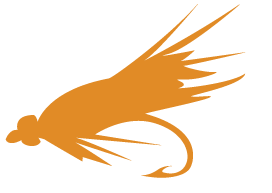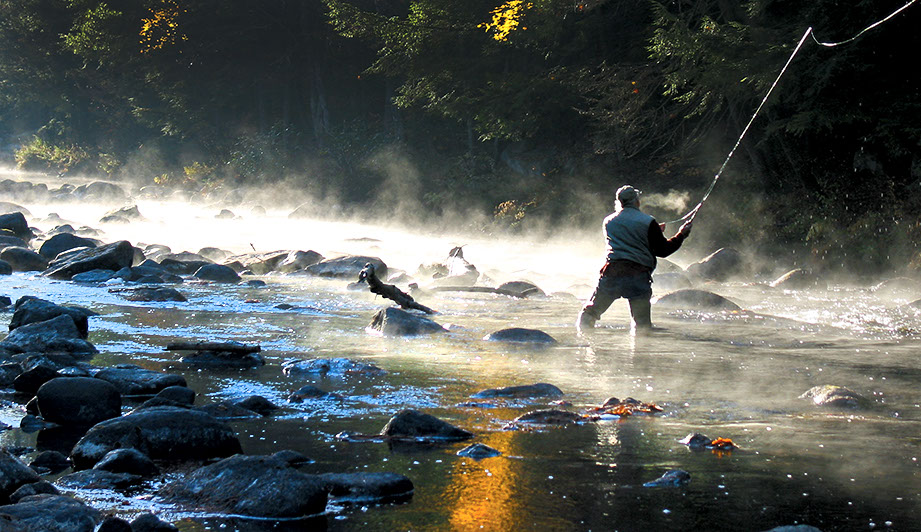

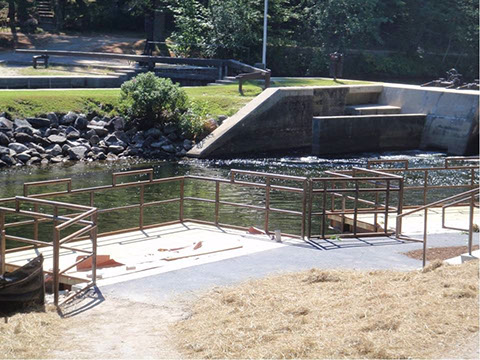
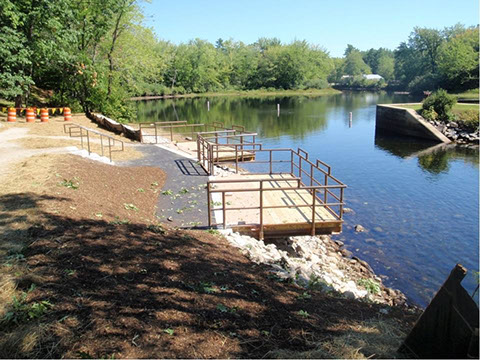
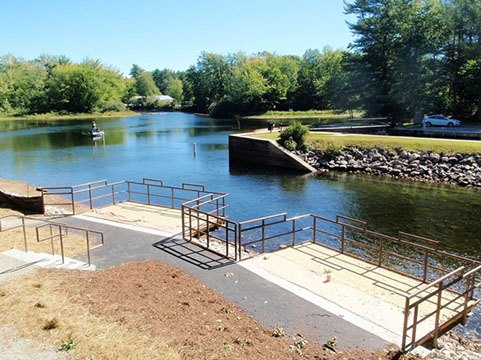
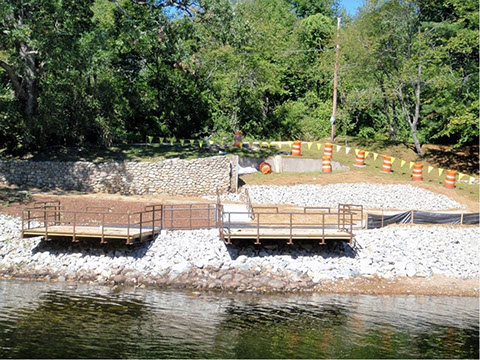
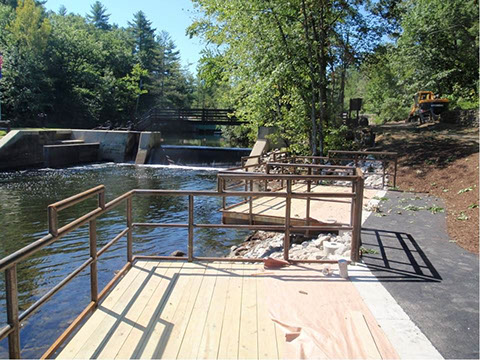
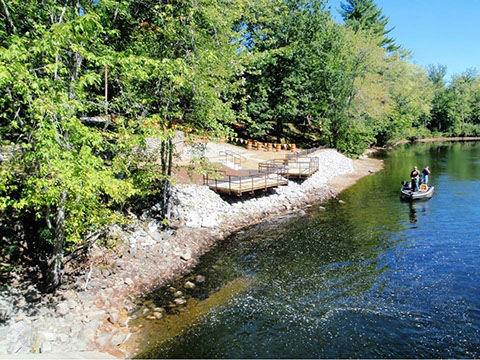
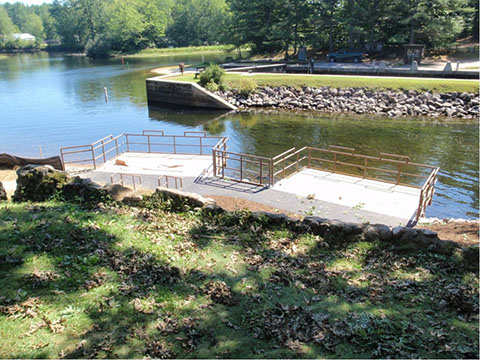
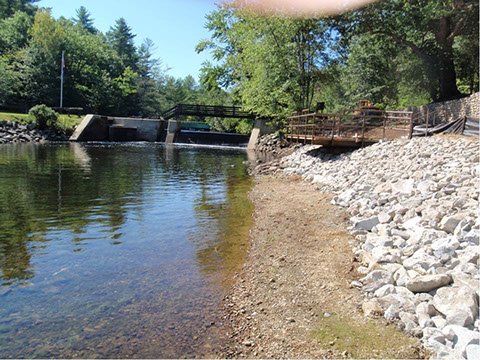
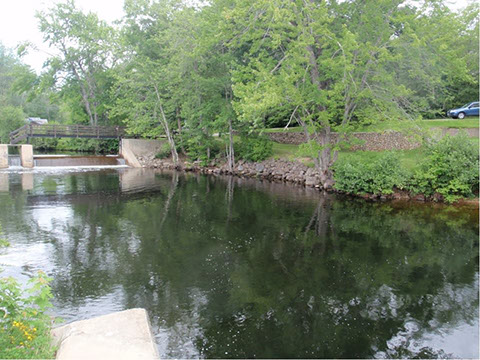
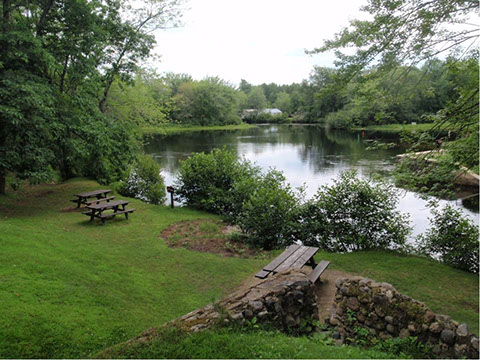
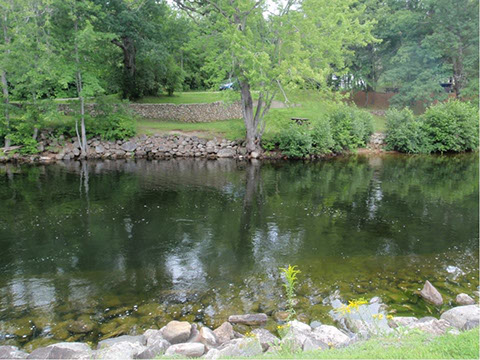
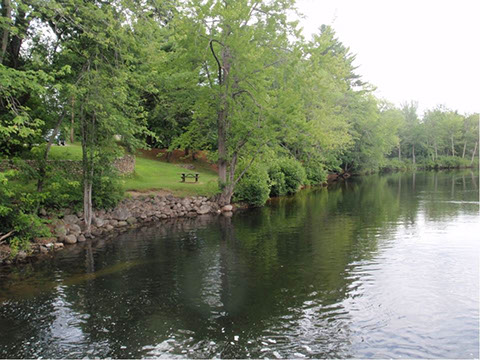
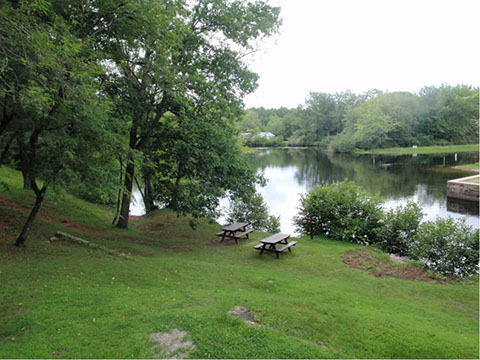
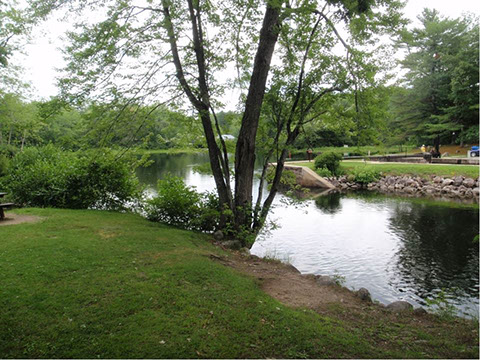
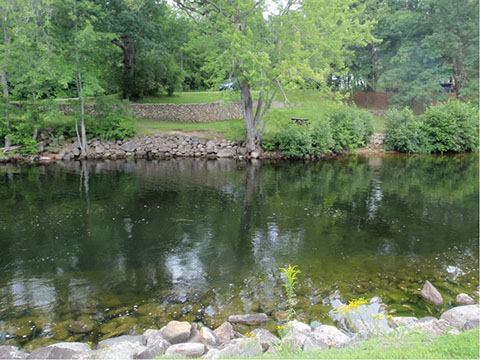
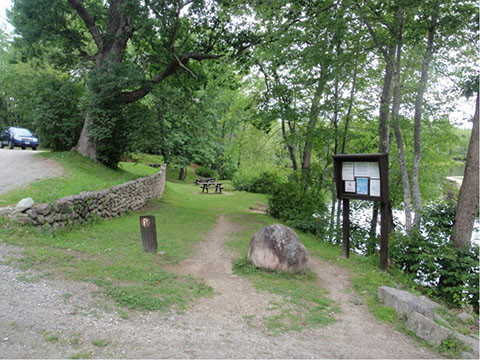
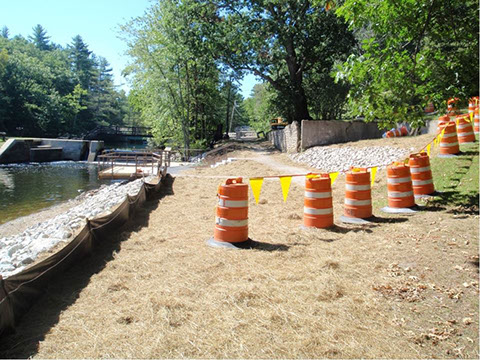
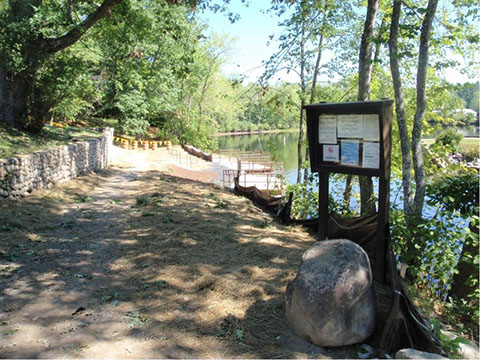
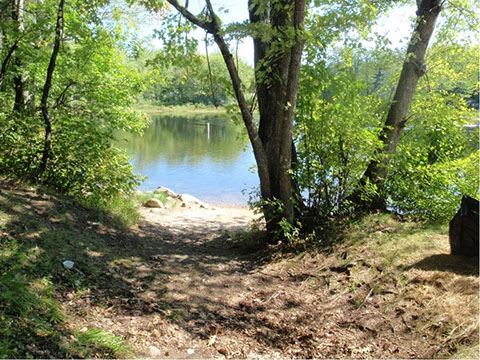
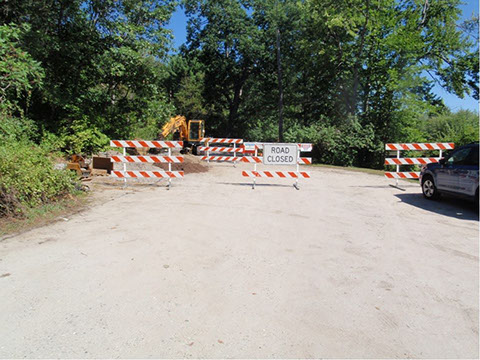
14 - 20
<
>
Project was dedicated at a ceremony in May 2016.
Many years of planning coming to a beautiful finish.
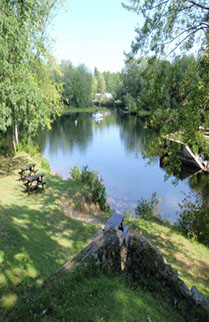 This is the Songo River, which all spawning Landlocks use to get to the Crooked River and the Spawning Grounds up-stream.Mollyockett TU's George Westerberg recognized the need to create a fishing opportunity for enlisted and veteran military members. His vision to create a casting platform for the priority use of wounded veterans at the famed Songo Locks on Sebago Lake has now become a reality. Through hundreds of hours of work, necessary permits were procured and the daunting task of raising the nearly $80,000 it will take to bring this project to fruition is complete.
This is the Songo River, which all spawning Landlocks use to get to the Crooked River and the Spawning Grounds up-stream.Mollyockett TU's George Westerberg recognized the need to create a fishing opportunity for enlisted and veteran military members. His vision to create a casting platform for the priority use of wounded veterans at the famed Songo Locks on Sebago Lake has now become a reality. Through hundreds of hours of work, necessary permits were procured and the daunting task of raising the nearly $80,000 it will take to bring this project to fruition is complete.
All of the proceeds raised during the 2014 Western Maine Fly Fishing Expo went directly to the benefit of the Veterans' Casting Platform at Songo Locks. The Songo River provides 65+% of Sebago Lake's landlocked salmon, access to the Crooked River's 42 miles and 24+ brooks and streams that provide spawning habitat.
Sebago Lake is home to one of Maine's few indigenous landlocked salmon populations, making it both historically and genetically important. The lake's salmon fishery supports a long and variable history that includes the world record landlocked salmon caught by Edward Blakely in 1907. Sebago is the largest lake in the region (2nd largest in Maine), it supports an indigenous salmon population, it has excellent water quality, it is an improving smelt forage base, and has a history of producing quality-sized landlocks. Its large size and great depth are ideal for pelagic species like salmon, and perhaps even better suited for competing lake trout.
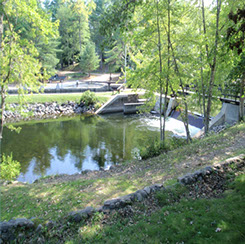 • The Crooked River and some of its tributaries provide excellent spawning and juvenile habitat for native landlocked salmon.
• The Crooked River and some of its tributaries provide excellent spawning and juvenile habitat for native landlocked salmon.
• Historically, numerous mill dams (Ede’s Falls, Scribner’s Mill, Bolster’s Mill and two unnamed log dams in Waterford/North Waterford; listed in order of occurrence, starting with the lower most dam) on the main-stem of the Crooked River severely restricted access to spawning and nursery habitat for salmon.
• Several of these dams (Ede’s, Scribner’s and Bolster’s dams) were located low in the river, restricting access for salmon spawning to only the lower most river areas, on a river that extends more than 50 miles.
• Unlike most salmon waters in the region, salmon production in the Crooked River system contributes a significant number of wild fish to the lake fishery, ranging from 20% to 70%, depending on stocking rates.
COMMITTEE
Honorary Chair
Brig. Gen. Richard W. Tuttle
Co-Chairs
Ret. George Westerberg
Richard J. Babine
Treasurer John Becker
Civil Engineer Jeff Amos, P. E.
Structural Engineer Joe Neville
Surveyor Jon Bliss
Communications Mark Snowden
Fundraising Mike McLaughlin
Members John Files, Mike McCue
Regional Fishery Biologist
Francis Brautigam
Maine DEP
Christine Woodruff, Skip Varney
Maine DOC
Ron Hunt, Gary Bes
Sebago State Park Manager
Matt McGuire
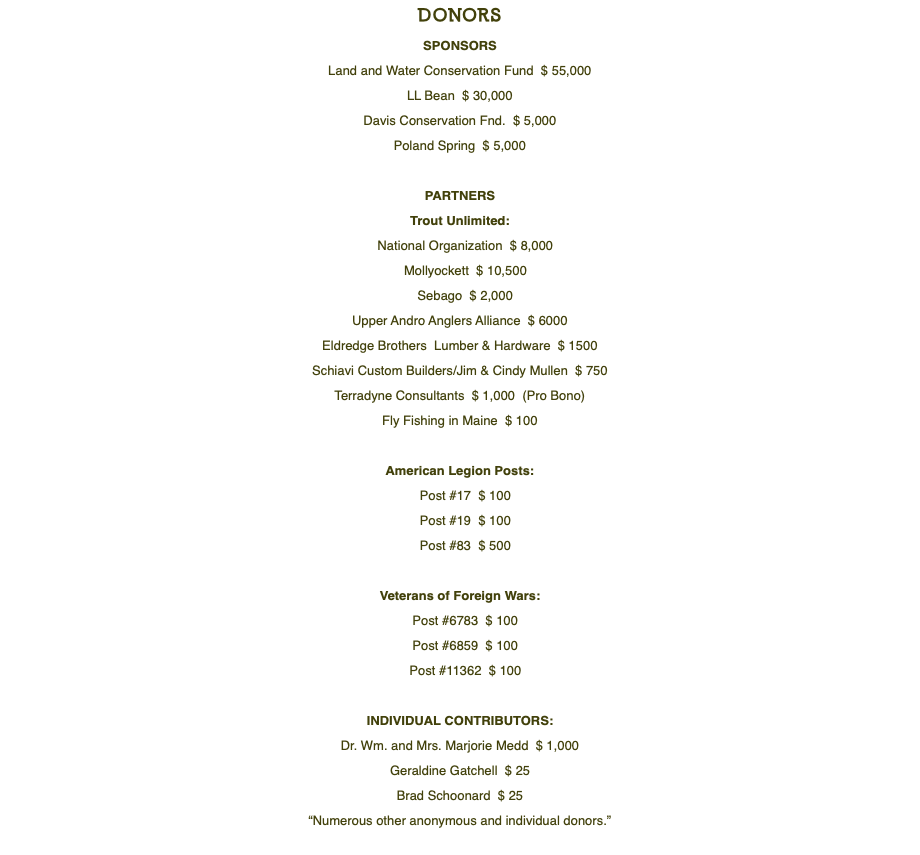
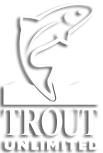
© 2000–2019, Mollyockett TU. All rights reserved. | Mollyockett Chapter of Trout Unlimited, Western Maine | Contact | Admin | Home
